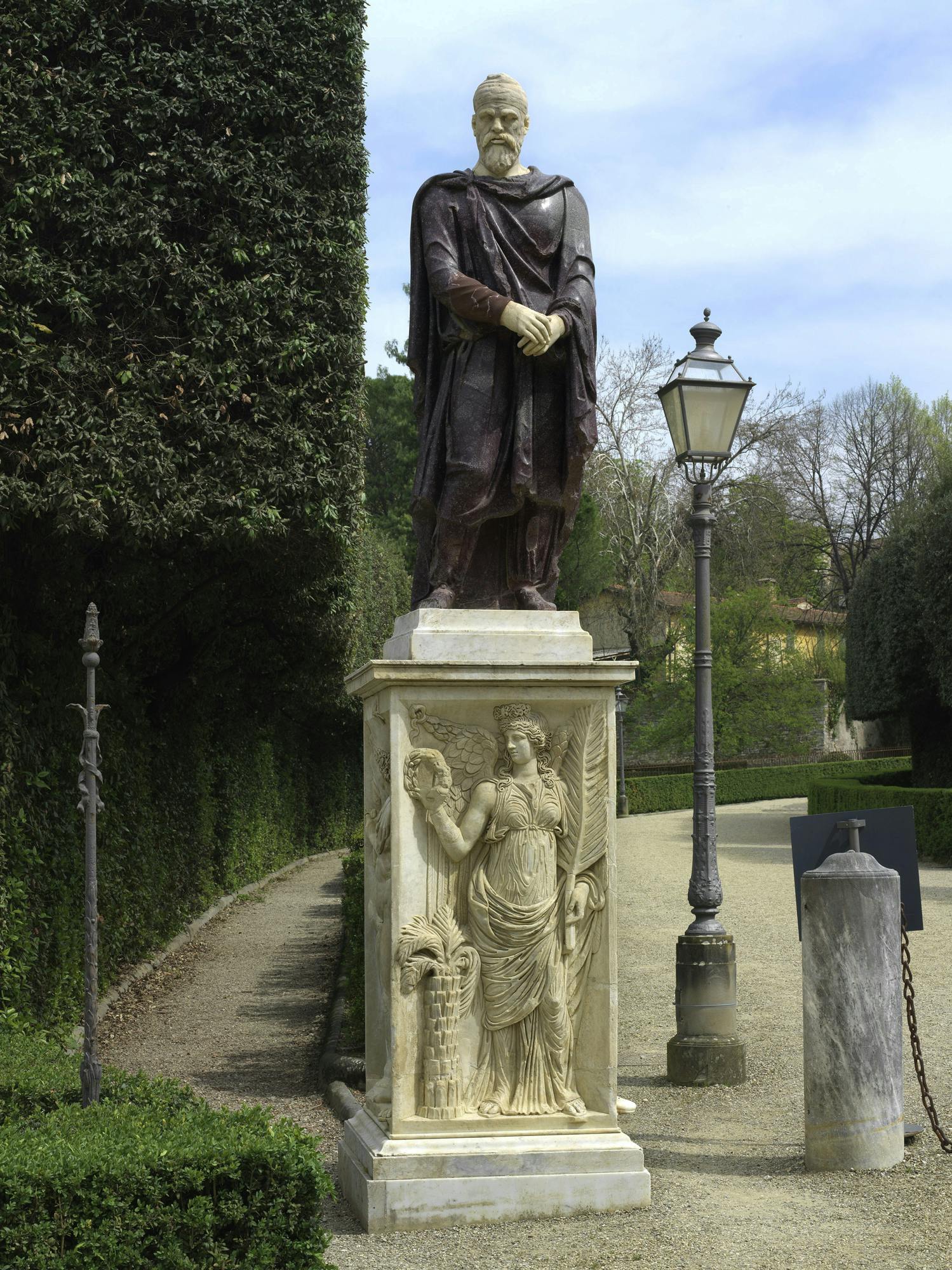Statue of a barbarian prisoner (Dace pileatus)
Roman art
The sculpture, which is bigger than human size, depicts a bearded figure dressed in a tunic, bracae and with a cloak buckled over his right shoulder. The man is wearing a hat, called pileus, which classifies him as a Dacian belonging to the aristocratic and priestly elite.Throughout its history the work was preserved together with its neighbour, the Dace comatus, whose description can be consulted for details. Also in this case, the sculpture was originally intended for the decoration of a large public complex of the Trajan era (probably the Trajan’s Forum). Dacian statues enjoyed considerable popularity in the Renaissance and Baroque periods, as they were used to decorate palaces, gardens and villas (De Lachenal 1987; De Lachenal 1991 pp. 609-621). In Florence, at the Museo dell'Opera del Duomo, it is possible to observe an early example of a post-antique use of this iconography on the body of a prophet, that was destined to decorate the façade of the cathedral already at the end of the 13th century. The figure, attributable to the workshop of Arnolfo di Cambio and located next to the enthroned figure of Boniface VIII, presented, like other figures of martyrs and saints that are decorating the façade (Le printemps 2013 pp. 272-273, no. I.12, b-c ), an ancient head adapted to a newly made body. Today we have no difficulty in recognising a Dacian wearing a pileus thanks to the features of the face - characterised by a pronounced convexity of the forehead and deeply sunken eyes - and to the characteristic turban, as it frequently occurred in the official iconography of the Trajan era (Capecchi 1992 p. 28-35). It is interesting to note that the head now housed in the Museo dell'Opera del Duomo presents dimensional and iconographic affinities with the head with pileus in white marble mounted on the body in porphyry preserved at Boboli.
P. Zanker, Das Trajansforum in Rom, Archäologischer Anzeiger, 1970, p. 510; L. De Lachenal, Fortuna dei prigionieri Daci a Roma, Xenia Quaderni, 7, 1987; L. De Lachenal, I prigionieri Daci della Collezione Medici-Della Valle: nuove considerazioni archeologiche antiquarie sulle loro vicende tra Roma e Firenze, in Boboli ’90, Atti del convegno internazionale, Firenze 1991, pp. 609-621; A. M. Riccomini, Il viaggio in Italia di Pietro De Lama. La formazione di un archeologo di età neoclassica, Pisa 2003; G. Capecchi – M. G. Marzi – V. Saladino, I Granduchi di Toscana e l’antico. Acquisti, restauri, allestimenti, Biblioteca dell'Archivum romanicum, n. 352, Firenze 2008, pp. 131-179; A. Cecchi, C. Gasparri, La Villa Médicis, Le collezioni del cardinale Ferdinando, IV, I dipinti e le sculture, Roma 2009, pp. 196-197, n. 227.1; L. Velcescu, Les Daces dans la sculpture romaine. Étude d’iconographie antique, Saint Estéve 2010; M. Bormand – B. Paolozzi Strozzi (a cura di), Le printemps de la Renaissance. La sculpture et les art à Florence 1400-1460, Catalogo della mostra, Paris, Musée du Louvre (26 settembre 2013-6 gennaio 2014), Paris 2013; L. Ungaro, Il potere ritratto nel Foro di Traiano, in Traiano 2017, pp. 146-150
Dacian prisoner
Roman Art
